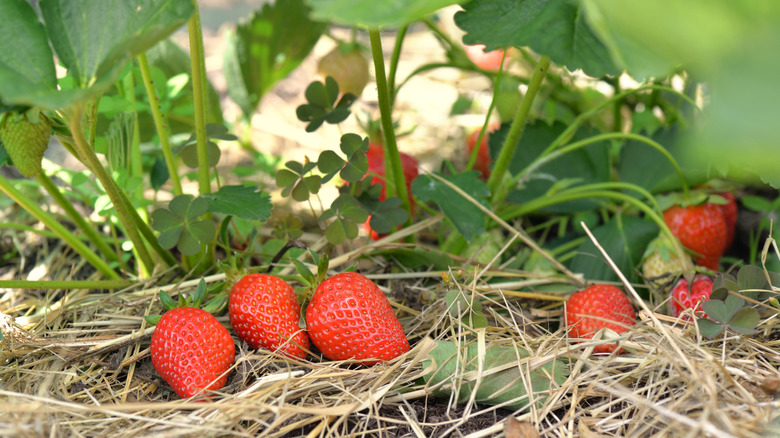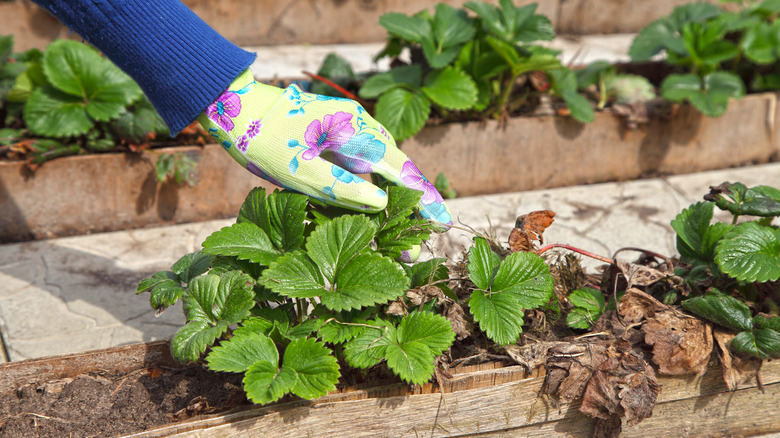The Hack That'll Keep Your Fresh Strawberries From Rotting In The Garden
We may receive a commission on purchases made from links.
One common theory is that strawberries take their name from the straw commonly used to mulch their beds. It's used in cold climates to help the plants' crowns survive the frost, snow, and drying winds of winter. In the summer, a layer of straw locks moisture into the soil, stopping it from evaporating away in the high temperatures. Perhaps most importantly, straw is used to protect the delicious bright red berries, which is why you're growing these plants in the first place! Not using straw — or any kind of mulch, for that matter — is among the biggest mistakes everyone makes when planting strawberries.
Strawberries are prone to fungal diseases that thrive in damp conditions. Think gray mold, leather rot, and anthracnose, among other less common ailments. Straw offers a non-chemical, organic alternative to commercial fungicides. By placing a layer of straw around your plants, you lift the strawberries off the ground, limiting their contact with fungal spores and moisture. This, in turn, reduces the chance of rot.
More mulch benefits
There are other benefits, too. Mulching fruiting strawberry plants with straw reduces weeds (resulting in less competition for nutrients and, thus, healthier berries), mimics the strawberry's natural growing environment, and protects berries from pests like slugs, snails, and birds. Berries harvested from straw beds are also safer to eat. With so many seeds on the outside, contaminated soil collects in the divots and is difficult to remove.
Pet stores and nurseries sell straw in bags and bales. It's also available for sale in-store and online at most leading hardware stores and big box retailers. Walmart has 300 square feet of long-needle pine straw for $147.99. And, of course, there's always Amazon. Barley straw is more waterproof than other straws, making it the more algae-resistant option. You can get a bag of barley straw big enough to cover a 35-square-foot garden bed for just $6.28 at Lowes. Other options commonly available to US gardeners are wheat straw — a 6-pound bag is $27.99 on Amazon — and pine needles.
Straw-laying best practices
It might be tempting to put down a layer of straw as soon as you plant your strawberries, but this would be a mistake. It can make them more susceptible to frostbite once winter rolls around. Wait until the first flowers appear, then lay your straw around your strawberry plants to a depth somewhere between three and six inches. Keep the straw loose to allow airflow. Don't bury the crowns (the middle) of the plants in straw — they'll retain too much water and rot or even die. Check the garden bed regularly and replace wet straw with fresh, dry straw.
If you're having trouble sourcing straw, there are a few alternatives you can explore. Try pine mulch, wood chips, recycled paper, rocks or stones, black plastic (used in the popular hill system of commercial strawberry farming), or landscaping fabric. There are even specialized strawberry mats — circular discs of mulch mat with a hole cut into them that fit around each plant. Just remember to remove whichever mulch product you use, straw or otherwise, after you're done harvesting your garden's strawberries so birds can get at any bugs hiding underneath it and to improve airflow.

